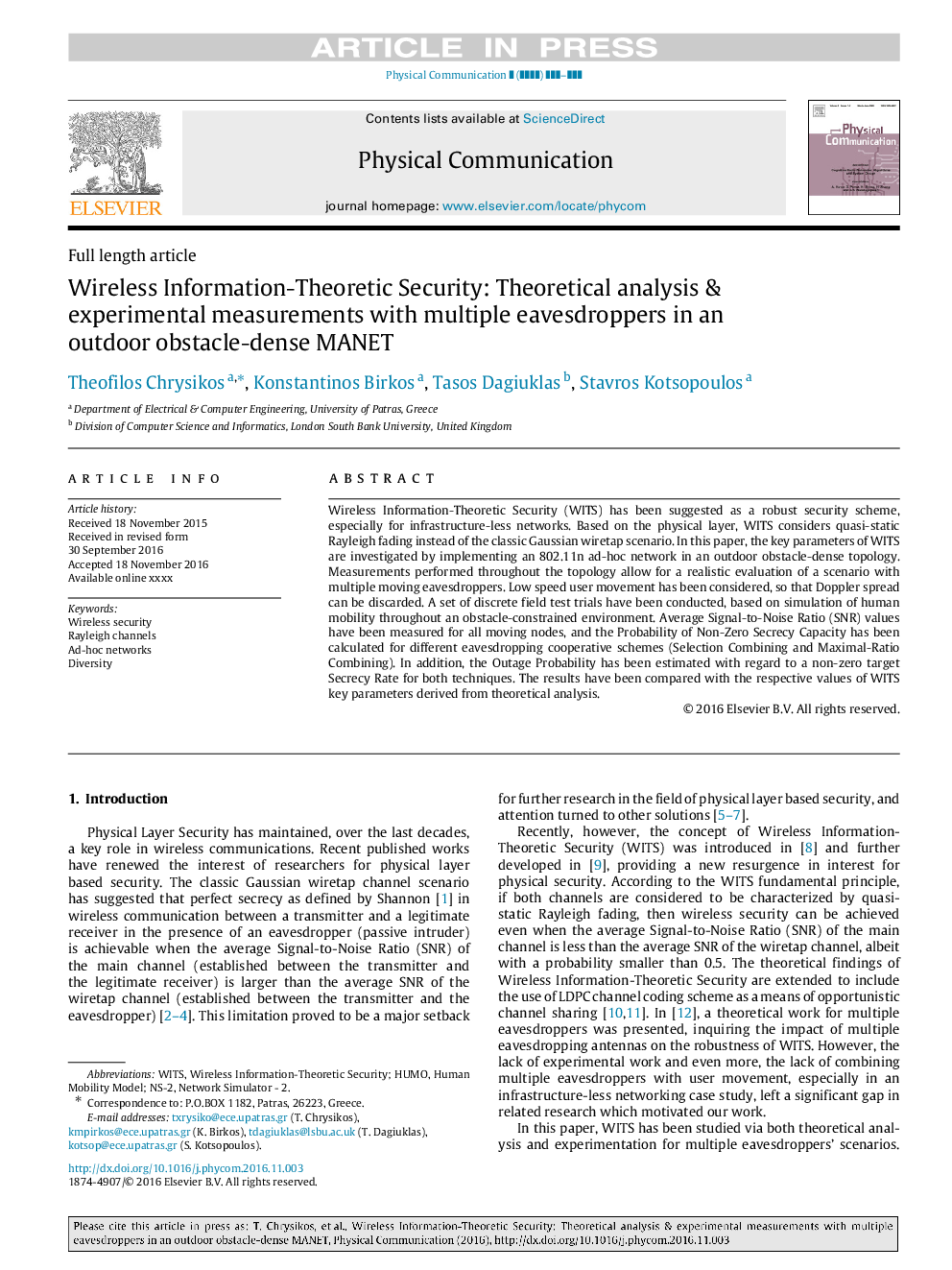| Article ID | Journal | Published Year | Pages | File Type |
|---|---|---|---|---|
| 6889338 | Physical Communication | 2017 | 11 Pages |
Abstract
Wireless Information-Theoretic Security (WITS) has been suggested as a robust security scheme, especially for infrastructure-less networks. Based on the physical layer, WITS considers quasi-static Rayleigh fading instead of the classic Gaussian wiretap scenario. In this paper, the key parameters of WITS are investigated by implementing an 802.11n ad-hoc network in an outdoor obstacle-dense topology. Measurements performed throughout the topology allow for a realistic evaluation of a scenario with multiple moving eavesdroppers. Low speed user movement has been considered, so that Doppler spread can be discarded. A set of discrete field test trials have been conducted, based on simulation of human mobility throughout an obstacle-constrained environment. Average Signal-to-Noise Ratio (SNR) values have been measured for all moving nodes, and the Probability of Non-Zero Secrecy Capacity has been calculated for different eavesdropping cooperative schemes (Selection Combining and Maximal-Ratio Combining). In addition, the Outage Probability has been estimated with regard to a non-zero target Secrecy Rate for both techniques. The results have been compared with the respective values of WITS key parameters derived from theoretical analysis.
Related Topics
Physical Sciences and Engineering
Computer Science
Computer Networks and Communications
Authors
Theofilos Chrysikos, Konstantinos Birkos, Tasos Dagiuklas, Stavros Kotsopoulos,
